|
|
Carl Reinecke (Composer, Arranger) |
|
Born: June 23, 1824 - Altona (part of Denmark at his time)
Died: March 10, 1910 - Leipzig, Germany |
|
The German composer, conductor and performer, Carl [Karl] Heinrich Carsten Reinecke, was the son of a teacher of music, Johann Peter Rudolph Reinecke, with whom he studied from an early age. Carl began to compose at the age of 7, and his first public appearance as a pianist was when he was 11 (or 12) years old.
As a youth Carl Reinecke was a first-rate orchestral violin-player. At 18 he made a concert tour through Sweden and Denmark, with especial success at Copenhagen. In 1843 he settled in Leipzig, where he studied diligently, and eagerly embraced the opportunities for cultivation afforded by the society of Felix Mendelssohn and Robert Schumann, with a success which amply shows itself in his music. In 1844 he made a professional tour with Wasielewski to Riga, returning by Hanover and Bremen. He was already in the pay of Christian VIII. of Denmark, and in 1846 he again visited Copenhagen, remaining there for two years. On both occasions he was appointed court pianist. In 1851 he went with the violinist Otto von Königslöw to Italy and Paris; and on his return Ferdinand Hiller (1811-1885) secured him for the professorship of the piano and counterpoint in the Conservatorium of Cologne. In 1854 he became conductor of the Konzertgesellschaft at Barmen, and in 1859 Musikdirector to the University of Breslau.
On Julius Rietz's departure from Leipzig to Dresden in 1860, Carl Reinecke succeeded him as conductor of the Gewandhausorchester concerts in Leipzig, and became at the same time professor of composition and piano at the Conservatorium. Between the years 1867 and 1872 he made extensive tours; in England he played at the Musical Union, Crystal Palace, and Philharmonic, on April 6, 17 and 19, 1869, respectively, and met with great success both as a virtuoso and a composer. He reappeared in this country in 1872, and waft equally well received. In 1865 the Gewandhaus-Quartett premiered his piano quintet, and in 1892 his D major string quartet. In 1895 he resigned the post of conductor of the Gewandhaus concerts, but kept his position in the Conservatorium, being appointed in 1897 director of musical studies until 1902, when he retired altogether.
Carl Reinecke is remembered as one of the most influential and versatile musicians of his time. He served as a teacher for 35 years, until 1902. His students included Edvard Grieg, Christian Sinding, Leoš Janáček, Isaac Albéniz, Johan Svendsen, Richard Franck, Felix Weingartner, Max Bruch among many others. After his retirement he devoted his time to composition and an output that contains almost three hundred published works. |
|
Music |
|
Carl Reinecke's industry in composition was great, his best works, as might be expected, being those for piano; his three pianoforte sonatas indeed are excellent compositions, on the lines of F. Mendelssohn's technique; his pieces for two pianofortes are also good His pianoforte concerto in F# minor, once a well.established favourite both with musicians and the public, was followed by two others in E minor and C respectively. He also wrote many cadenzas for others' works, including a large set published as his Op. 87, as well as concertos for violin, cello, harp and flute. Besides other instrumental music - a wind octet, quintets, four string quartets, seven trios, etc. - he composed an opera in five acts, König Manfred, and two in one act each, Der vierjährige Posten (after Körner) and Ein Abenteuer Händels; Auf hohen Befehl (1886) and Der Gouverneur von Tours (1891); incidental music to Schiller's Tell; an oratorio, Belsazar; cantatas for men's voices Hakon Jarl and Die Flucht nach Ägypten; overtures, Dame Kobold, Aladdin, Friedensfeier, an overture, Zenobia, and a funeral march for the Emperor Frederick (op. 200); two masses, and three symphonies (Op. 79 in A, Op. 134 in C minor, and Op. 227 in G minor); and a large number of songs and of pianoforte pieces in all styles; including valuable studies and educational works. Of his settings of fairy tales as cantatas for female voices, Schneewittchen, Dornräschen, Aschenbrodel and several others became very popular. His style was refined, and he wrote with peculiar clearness and correctness. Various contributions to musical literature will be found enumerated in Riemann. His best known work is his flute sonata Undine, but most of his other works are unperformed today. |
|
Selected Works |
|
König Manfred , comic opera (1867)
Ein Abenteuer Händels, operetta (1874)
Auf hohen Befehl, comic opera (1886)
Der Gouverneur von Tours, comic opera (1891)
Symphony No. 1 in A major, Op. 79 (1858)
Symphony No. 2 in C minor, Hakon Jarl, Op. 134 (1874)
Symphony No. 3 in G minor, Op. 227 (c1895)
Piano quartet in E-flat, Op. 34 (1844)
Piano quartet in light style, Op. 272 (1904)
Piano quintet in A, Op. 83 (1866)
Violoncello concerto in D minor, Op. 82 (1864)
Violin concerto in G minor, Op. 141 (1876)
Concerto for harp and orchestra in E minor, Op. 182 (1884)
Flute concerto in D major, Op. 283
Piano concerto no. 1 in F-sharp minor, Op. 72 (1860)
Piano concerto no. 2 in E minor, Op. 120 (1872)
Piano concerto no. 3 in C major, Op. 144 (1877)
Piano concerto no. 4 in B minor, Op. 254 (1900)
Serenade for strings in G minor, Op. 242 (c1898)
Trio for piano, oboe and horn in A minor, Op. 188 (1886)
Trio for piano, clarinet and viola in A, Op. 264
Trio for piano, clarinet and horn in B-flat, Op. 274 (1905)
Octet for winds in B-flat, Op. 216 (1892)
Sextet for flute, oboe, clarinet, 2 horns and bassoon in B-flat, Op. 271
5 string quartets (Op. 16 in E-flat, 1843, Op. 30 in F, 1851, Op. 132 in C, 1874, Op. 211 in D major, 1890, and Op. 287)
Organ sonata Op. 284
Piano sonata for the left hand Op. 179 (1884)
String trio in C minor Op. 249
Sonatas for flute (Sonata Undine) Op. 167, 1882, violin, cello (three, in A minor Op. 42 1847-8, D major Op. 89 1866 and G major Op. 238)
3 light piano trios Op. 159a
Piano trio Op. 230
Drei Fantasiestücke für Viola und Klavier, Op. 43 (Three fantasy pieces for viola and piano) |
|

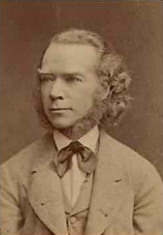
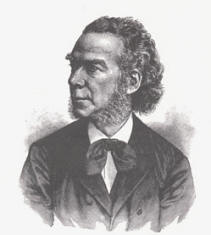
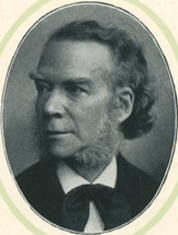
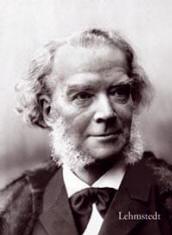
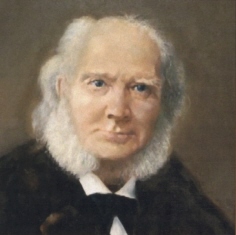
|
|
Source: Groves Dictionary of Music and Musicians (1952 Edition; Author: Dr. Franz Gehring); Wikipedia Website
Contributed by Aryeh Oron (July 2007) |
|
Carl Reinecke : Short Biography | Piano Transcriptions: Works | Recordings |
|
Links to other Sites |
|
Carl Reinecke (Wikipedia)
Carl Reinecke (Encyclopaedia Britannica)
Carl Reinecke (Official Website) |
Carl Reinecke Biography (Naxos)
Karl Reinecke (1824 - 1910) (Karadar)
Carl Reinecke (Classical Composer Database) |
|
Bibliography |
|
J. W. von Wasielewski : Karl Reinecke (1893)
E. Segnitz: Carl Rienecke (1900) |
|
|